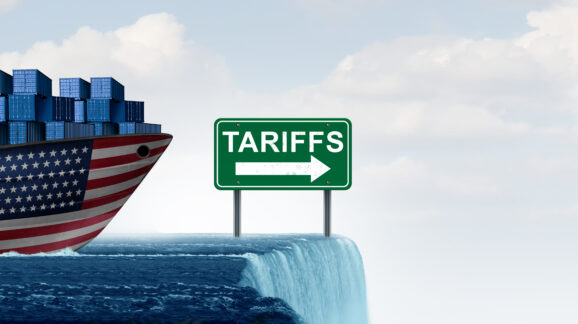Tariff letters go out, with little rhyme or reason

Photo Credit: Getty
The table below lists all the countries to which President Donald Trump has so far sent letters informing them of new universal tariff rates. The president has also stated in each letter that if any country raises their tariff rate on US imports, then he will raise his own tariff rate on that country by that same percentage. So, if Canada raises their tariff on US imports by 10 percent, then Trump will add 10 percent to the initial 35 percent tariff on Canadian goods.
It is unclear the extent to which existing free trade agreements–such as those with South Korea–or existing exceptions, such as those for electronics, still apply.
(The letters are listed in reverse chronological order.)
| Country | New tariff percentage | Difference from previous percentage (implemented or threatened) |
| EU | 30 | +10 |
| Mexico | 30 | +5 |
| Canada | 35 | +10 |
| Sri Lanka | 30 | -14 |
| Brazil | 50 | +40 |
| Libya | 30 | -1 |
| Iraq | 30 | -9 |
| Algeria | 30 | No change |
| Moldova | 25 | -6 |
| Brunei | 25 | +1 |
| Philippines | 20 | +3 |
| Bosnia and Herzegovina | 30 | -5 |
| Thailand | 36 | No change |
| Cambodia | 36 | -13 |
| Serbia | 35 | -2 |
| Bangladesh | 35 | -2 |
| Indonesia | 32 | No change |
| Tunisia | 25 | -3 |
| Myanmar | 40 | -4 |
| Laos | 40 | -8 |
| South Africa | 30 | No change |
| Kazakhstan | 25 | -2 |
| Malaysia | 25 | +1 |
| Korea | 25 | No change |
| Japan | 25 | +1 |
There appears to be little rhyme or reason to these changes. Many rates seem to be determined simply by rounding to the nearest five or ten percent, though not in the case of some Southeast Asian nations. The “Liberation Day” tariffs were at the very least based on a formula, albeit a simplistic one. But the calculations for these newer tariffs are rarely explained in the letters. It is unclear what might have prompted a difference of one or two percent. In at least one case, the announced rates differ from what Vietnam’s negotiators thought had been agreed upon.
One particularly interesting example of this lack of reasoning is Brazil, with whom the US has a trade surplus. Under the Liberation Day formula, that would have resulted in the lowest tariff rate–ten percent. However, the letter to Brazil begins with a complaint about the country’s treatment of former Brazilian president Jair Bolsonaro and uses that to justify the high tariff level of 50 percent. It is unclear how this complaint relates to the so-called economic emergency which is the purported basis for President Trump’s tariff authority.
Another odd factor about the letters is that one went to the President of Myanmar, whom the US does not otherwise recognize as legitimate. The military dictator has since claimed this as official recognition.
President Trump’s use of various statutes to issue these letters is currently before the courts.
Research Associate Nadav Sternheim contributed to this blog post